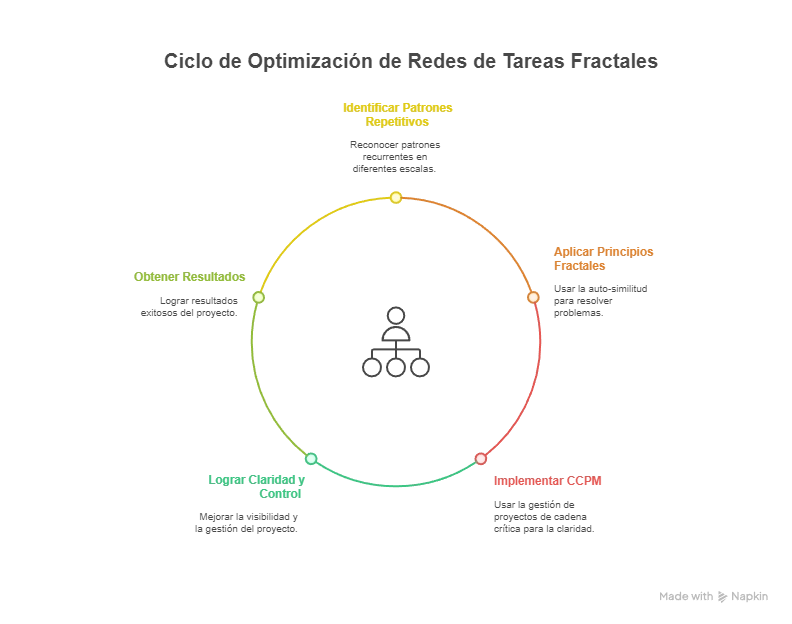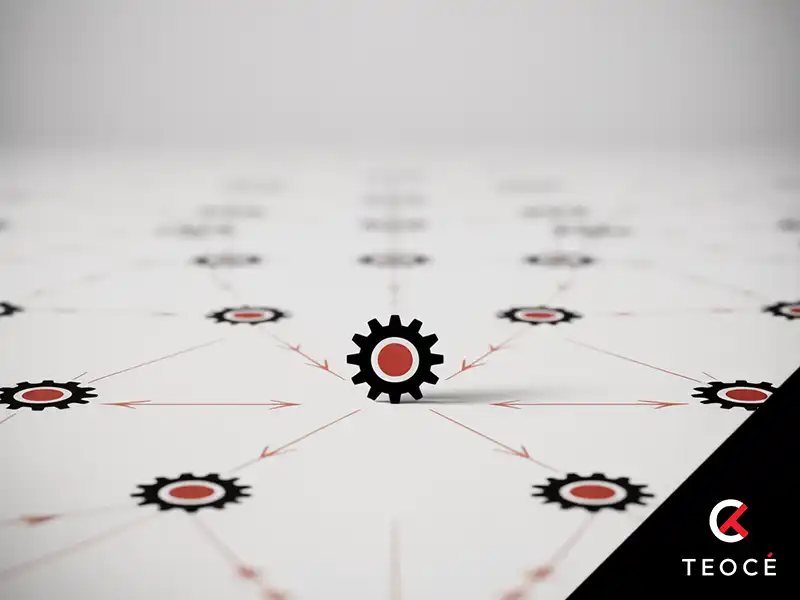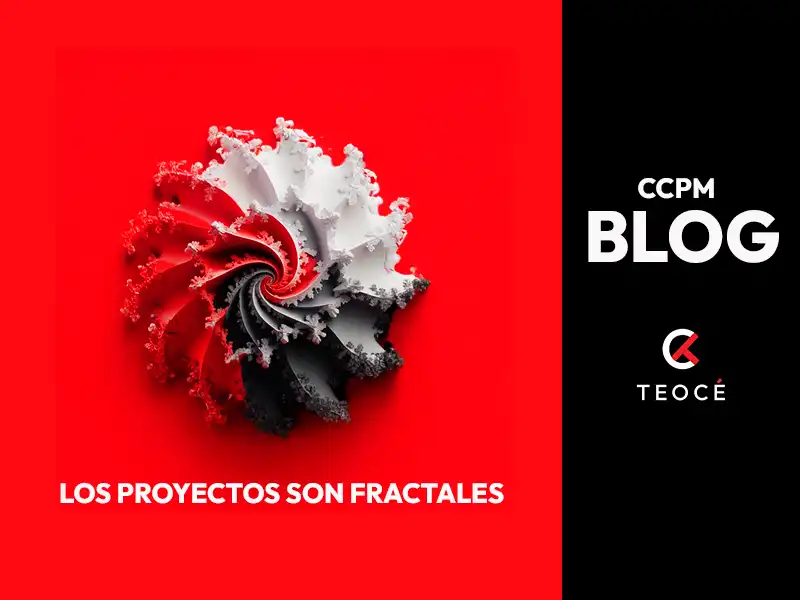When it is said that "task networks are fractal," it is not a decorative metaphor: it is a technical statement with profound practical implications. It means that in the planning and execution of complex projects-especially in multi-project environments with limited resources-organizational patterns, problems and solutions repeat themselves at different scales.
In this article we show you why optimizing task networks requires looking at your project as a fractal: a logical structure where the micro reflects the macro. You will see how to apply this principle with Critical Chain Project Management (CCPM) to gain clarity, control and results.
What is a fractal and what does it have to do with your task network?
A fractal is a shape that repeats itself at different scales. In nature we see them in snowflakes, ferns or coastlines: their basic structure appears again and again, from the whole to the details.
In project management, the parallel is clear:
- the logical structure of tasks,
- technical units,
- the uncertainty
- and bottlenecks
not only appear at the overall project level. They also manifest themselves in each subproject, phase or group of tasks. What you see in big, you will also see in small.

This idea does not remain theoretical. Let's see how this fractal logic manifests itself in the structure of the project itself.
The logic of the project is repeated at each level
Every project is supported by a network of tasks that describes what needs to be done and how it is connected. This network is not random: it has an internal logic based on dependency relationships.
When you break down the project into phases, deliverables or smaller tasks, that logical structure is preserved.
Each block maintains the same basic combination of elements: linear sequences, bifurcations, integrations and parallel tasks.
Thus, the optimization of task networks must consider this hierarchical repetition: an improvement in the micro can be replicated in the macro, and vice versa.

But it is not only the structure of tasks that repeats itself: so do the conditions that affect their execution.
Uncertainty is also fractal
Another element that behaves fractally is uncertainty. Whether at the level of the entire project or in a single task, deviations are inevitable: there are delays, advances, changes of context, resources that are not available when needed.
Traditional methods ignore this reality. In contrast, CCPM recognizes that uncertainty is structural and proposes consistent ways to manage it at all levels. Generic buffers or hidden margins are not enough: the system must be protected with clear, visible and controlled mechanisms.
To manage this replicated uncertainty, CCPM introduces an essential mechanism: buffers.
Buffers: protections that replicate on different scales
One of the keys to CCPM is the use of buffers (time reserves). They are not placed at each task, but at the end of the critical chain and at the feed points. This grouped protection is more efficient because variations are offset against each other.
But here's the interesting thing: this principle also applies fractally. You can protect a subproject with its own buffer, or even a critical phase within that subproject. At each level where there is a local critical path, you can place a buffer that acts as a variability absorber.
In addition, the buffer consumption tracking (by means of "Fever Chart" type graphics) allows monitoring the project status both in the general view and in each component. A self-similar control tool.
Herbie is everywhere: the fractality of constraints
According to the Theory of Constraints (TOC), every system has a bottleneck that determines its performance. In CCPM this translates into identifying the limiting resource (Herbie) that sets the pace of the project.
What few managers realize is that this principle is also fractal: just as there is a Herbie in the entire project, there is also a Herbie in each phase, team or group of tasks.

Detecting it and managing it locally with the same rules (exploit the constraint, subordinate the rest, etc.) improves overall performance. Because if all levels are aligned with their constraint, the whole system flows better.
And just as bottlenecks are fractal, operating behaviors also follow repetitive patterns.
Repeating behaviors, replicating solutions
Problems such as:
- multitasking,
- lack of focus,
- or erratic prioritization
are symptoms that appear at all levels of an organization. And the solutions proposed by CCPM - focus, finish before moving on, minimize interruptions - are not just strategic recommendations: they are operating principles to be applied at every node of the fractal.
Each team, each project, each person can work under the same principles, generating coherence throughout the system.
Once again, simple logic governs complexity.
This pattern consistency not only serves to execute, but also to continuously improve the system.
Continuous improvement is also a fractal cycle
TOC's five steps of continuous improvement:
- identify,
- exploit,
- subordinate,
- raise
- and start over
are, by definition, a recursive process. Every time you improve the system, new limitations emerge. Every time you solve one, another, more subtle one appears.
This cycle is not an isolated process. It must be applied at all scales: in a project portfolio, in an individual project, in a critical phase, in a specific team.
Thus, the improvement is disseminated as a fractal pattern that refines the structure without losing coherence.
Conclusion: think fractal, manage logically.

Task network optimization is not just a matter of algorithms or tools.
It is a matter of seeing repeated patterns at all levels of the system and applying clear rules that remain consistent.
When you understand that your project is a fractal -a complex but self-similar structure-, you start to design and manage it differently: you visualize better, prioritize better, correct better.
And that's the difference between planning and mastering planning.
do you want to improve your knowledge of ccpm?
Discover how to use CCPM to manage task networks with more focus, less chaos and better results:
Start planning logically. Today.
